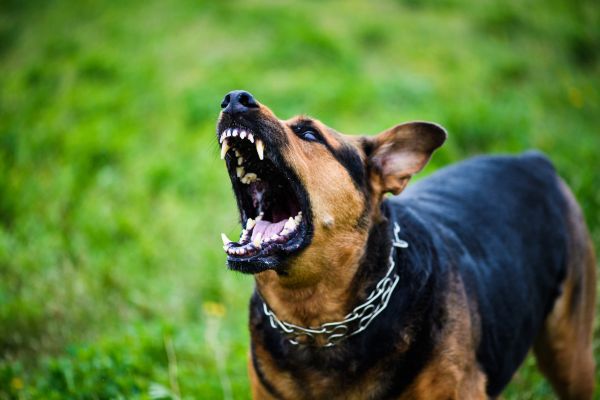Dealing with an aggressive dog can be scary, stressful, and honestly, a little heartbreaking. No one brings a pup into their life expecting to worry about growling, snapping, or lunging. But here’s the thing: dog aggression is more common than people admit. The good news? With patience, understanding, and the right steps, you can absolutely learn how to stop dog aggression and help your furry friend feel safe again.
Understanding Why Dogs Become Aggressive
Before jumping into solutions, it’s important to understand the “why.” Dogs don’t just wake up one day and decide to be mean. Aggression is usually their way of communicating fear, pain, or confusion.
Sometimes it’s fear-based—maybe your dog had a bad experience with another animal or stranger. Other times, it’s territorial—like when the mail carrier comes too close to “their” yard. Pain and illness can also trigger aggression. A dog in pain might growl if you touch them because they’re trying to protect themselves.
The bottom line: aggression is often a symptom, not the root problem.
The First Step: Rule Out Medical Issues
Let’s be real—before you even try training techniques, your first stop should be the vet. Dogs are pros at hiding discomfort, but if arthritis, dental pain, or an injury is involved, no amount of training will work until the pain is managed. So if your dog suddenly shows signs of aggression, schedule that checkup.
Recognizing Early Warning Signs
Aggression doesn’t always start with a bite. It usually escalates. Pay attention to the signals—growling, stiff body language, pinned-back ears, or showing teeth. These are your dog’s way of saying, “I’m uncomfortable.” By catching those signs early, you can step in before things get out of hand.
How To Stop Dog Aggression With Training
Alright, once health issues are ruled out, it’s time to focus on behavior. Training isn’t about punishment—it’s about building trust. Here are some core strategies for how to stop dog aggression the right way.
Socialization Done Right
Dogs who lack exposure to different people, pets, and environments can get nervous. Slow, positive socialization helps them learn that new experiences aren’t scary. Start small—invite calm friends over or go on quiet walks where your dog can observe without being overwhelmed.
Desensitization and Counter-Conditioning
Sounds fancy, but it’s really just teaching your dog to have a different emotional response. For example, if your dog gets aggressive around other dogs, start at a distance where they stay calm. Reward them with treats for calm behavior. Over time, you gradually decrease the distance, always keeping it positive.
Positive Reinforcement
Here’s the truth: yelling at an aggressive dog often makes things worse. Instead, reward the behavior you want to see. Calm sitting? Treat. Relaxed body language? Praise. The more your dog learns that calm equals good things, the less likely they are to lash out.
Avoid Common Mistakes
One of the biggest mistakes people make is punishing aggression with force. Hitting, shouting, or using harsh collars can create more fear, which usually ramps up aggression. Another mistake is ignoring it, hoping the problem will just go away. Spoiler: it won’t.
Professional Help Is Not a Failure
Sometimes, despite your best efforts, aggression feels too big to handle alone. That’s when a certified dog trainer or behaviorist comes in. These pros understand canine psychology and can create a tailored plan for your pup. Think of it like calling in a therapist—sometimes you just need an expert eye.
Managing the Environment
While you’re working on long-term solutions, you might need to manage situations in the meantime. That could mean using baby gates in the house, avoiding crowded dog parks, or using a properly fitted muzzle during walks. A muzzle isn’t cruel—it’s a safety tool when used responsibly.
Building Trust and Bonding
At the heart of stopping dog aggression is rebuilding trust. Spend time with your dog in ways that don’t trigger stress—play fetch, go for a calm walk, or just hang out on the couch. When your dog feels safe around you, they’re more likely to relax in stressful situations.
Patience Is Key
Let’s be honest—this isn’t a quick fix. Learning how to stop dog aggression takes time. Progress might feel slow, and there will be setbacks. But every small win counts. The key is consistency. Show up for your dog every single day, and over time, you’ll notice changes.
Final Thoughts on How To Stop Dog Aggression
Living with an aggressive dog isn’t easy, but it doesn’t mean your pup is “bad” or beyond help. Aggression is just their way of communicating something deeper. By understanding the root causes, ruling out medical issues, using positive training methods, and maybe getting professional help, you can turn things around.
The journey takes patience, empathy, and commitment, but the payoff is huge—a calmer, happier dog and a stronger bond between you and your best friend. And really, isn’t that what every dog owner wants?







